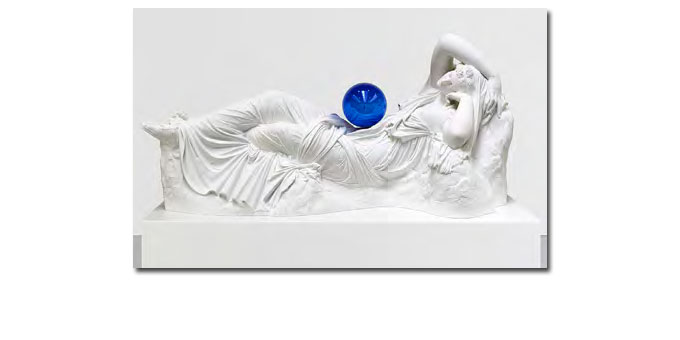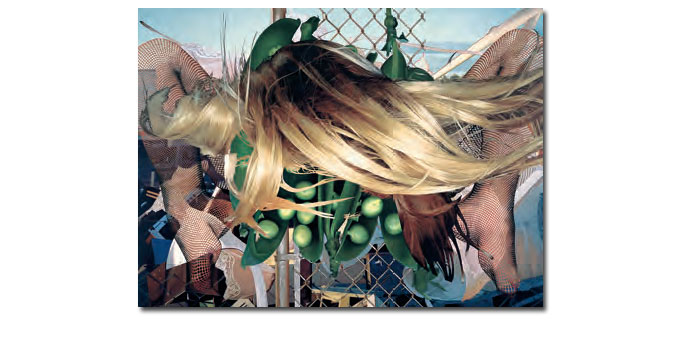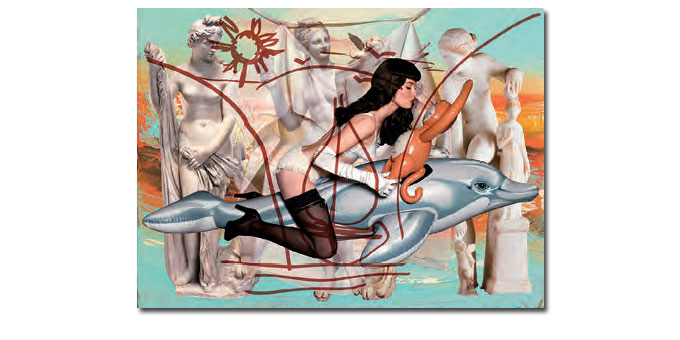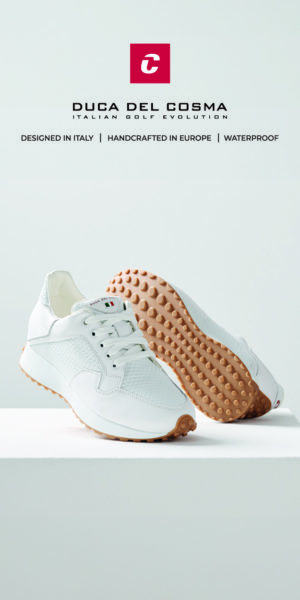Posted on December 10, 2014 in Diary, Arts & culture.
Jeff Koons, the retrospective
The Pompidou Center presents from November 26, the first complete retrospective dedicated to Jeff Koons in Europe. This unprecedented exhibition allows you to take the full measure of a work that has marked the artistic and cultural landscape of contemporary art for thirty-five years.
If Jeff Koons has been the subject of many exhibitions, sometimes presenting precise sets of his work, sometimes specific sculptures in given historical environments, no exhibition has gathered his work in a comprehensive and chronological journey, covering the whole of its production. Some hundred sculptures and paintings make up this retrospective which follows all the milestones in the artist's career.
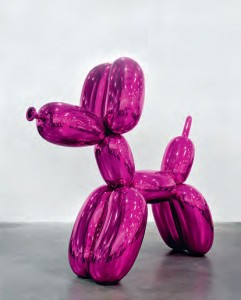
Balloon Dog (Magenta), 1994 - 2000
Mirror polished stainless steel, transparent varnish 1 of 5 unique versions
Pinault collection - © Jeff Koons
Photo: © Jeff Koons
Designed in collaboration with the Whitney Museum of American Art, which presented it in New York from June 27 to October 19, 2014, the exhibition “Jeff Koons, the retrospective” at the Pompidou Center invites visitors to take a look free of prejudices on the work of one of the most famous and controversial artists of our time, whom Bernard Blistène, director of the national museum of modern art and curator of the Parisian exhibition, considers as "the last of Pops".
Coming from all sides, the works exhibited at the Center Pompidou have become icons of the present time: aquariums from the series “Equilibrium” (1985), “Rabbit” (1986), “Michael Jackson and Bubbles” (1988) or “Balloon Dog '(1994-2000) have gained immense popularity and marked contemporary visual culture.
Built on a historical and chronological mode, the retrospective highlights the different cycles of the artist's work, from the first pieces appropriating the art of their time, to current works implicitly dialoguing with art history classic. It highlights the coherence of the artist's work and his lines of force, as well as the diversity and richness of his creative force.
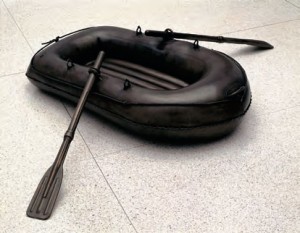
Lifeboat, 1985
Bronze - Edition 3/3
Museum Of Contemporary Art Chicago, Gerald S. Elliott Collection, 1995.56.AC
© Jeff Koons
Jeff Koons' work has established itself over the course of various series. Fragile to ridiculous, the first "Inflatables" gave way to assemblies seeking a synthesis between Pop art and Minimalism, like those in the series "The New".
With the following series, Koons sets his sights on the iconography of mass culture, the bearer of the American dream and its fantasies. Thus, the series “Luxury and Degradation” (1986) duplicates the advertising strategies deployed by the big brands, while “Banality” (1988) gives pride of place to popular imagery, mixing childish dreams and erotic suggestions with different “hits” of art history. Koons then claims the realization of artifacts glorifying the taste of the American middle classes, of which he tirelessly presents himself as the spokesperson.
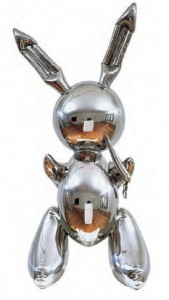
Rabbit, 1986
Stainless steel - Edition 1/3
Museum of Contemporary Art Chicago, Partial Gift of Stefan
T. Edlis and H. Gael Neeson, 2000.21 - © Jeff Koons
Subversive and scandalous, "Made in Heaven" (1989-1991) blurs the line between Koons and his character through resolutely pornographic staging, offering the artist and his muse material for multiple representations. Koons then becomes "the rotting enchanter" of a society where dream and illusion confusedly mix, collective ideals and violence. Having experienced monumentality with "Puppy" (1992) and "Split Rocker" (2000), Koons is confronted with public space. With the series "Celebration" (1994), and in particular the famous "Balloon Dog", he reached a technical paroxysm and carried to its apogee the transfiguration of trivial objects into accomplished sculptural forms, gleaming and inflated.
In fact, the idea of the inflatable runs through all of Jeff Koons' work, as evidenced by the series "Popeye" (2003) or "Hulk Elvis" (2007), which the artist commissioned in stainless steel like of the emblematic “Rabbit” which will have contributed so much to its notoriety.
From “Easyfun” (1999-2003) to “Antiquity” (2009-2014), Jeff Koons gives pride of place to becoming the image of painting. Using collage, he brings together on the same surface heterogeneous elements that he fragments and stratifies. More than ever, a large place is given to American stereotypes - wide open spaces, excess industrial foods, superheroes and other comic book characters - stereotypes in which Koons interweaves more personal references, ranging from childish graffiti to standards of art antique. So with his latest “Gazing Balls” (2013) which juxtapose garden ornaments with plaster casts of masterpieces of classical art.
This exhibition is organized by the Whitney Museum of American Art, New York, in collaboration with the Center Pompidou, Paris
Pratical information
November 26, 2014 - April 27, 2015 from 11:00 a.m. to 21:00 p.m.
Prices: € 13, TR € 10 / Package giving access to all temporary exhibitions and the museum's permanent collections
F1 and golf challenge each other on Netflix, Pierre Gasly versus Justin Thomas
Roche Bobois Pro-Am of Bordeaux: great golf courses, great wines and gastronomy...
Tignes Golf Open: the golf and musical event






